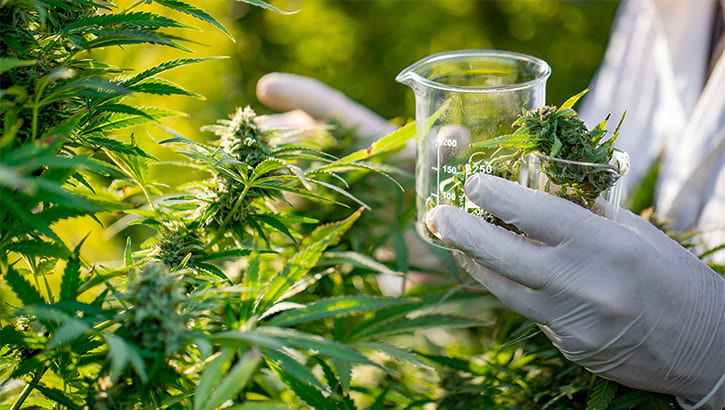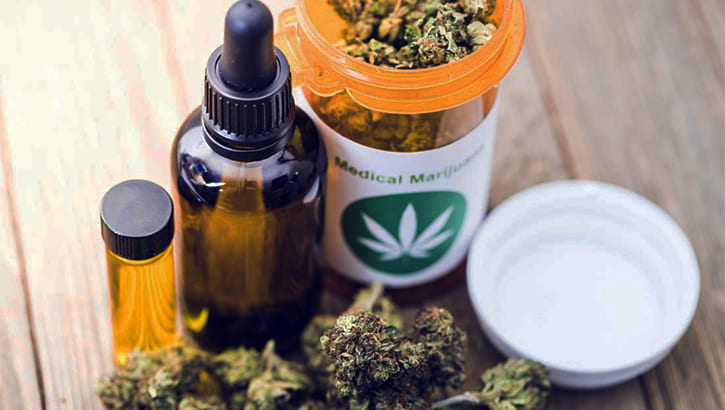Marijuana in medicine
According to the Fred Hutchison Cancer Research Institute in Seattle, up to 66% of cancer patients in the United States use medical marijuana during chemotherapy to relieve pain, weakness, and lightheadedness. To quickly suppress attacks of nausea and acute pain, cannabis extracts are recommended to be inhaled using a portable vaporizer or nasal spray. From the lungs, cannabinoids enter the bloodstream almost immediately and bring instant relief. To prevent and reduce new attacks, marijuana is taken orally. Active components are slowly absorbed from the gastrointestinal tract, providing a smooth prolonged action.

And in 2020, scientists from Newcastle University published encouraging results from experiments on cell cultures. Eve hemp extract with high levels of CBD and reduced THC content (up to 1%) famously cracked down on malignant bone marrow cells in leukemia and glioma cells, the most common form of primary brain cancer. Previously, information was received from the University of Rostock on the anticancer effect of cannabis in adenocarcinoma of the lung, liver and breast. Herbal preparations not only restrained the growth of neoplasms, but also prevented the germination of blood vessels into the tumor, cutting off access to the body’s resources for cancer.
Diseases treated by marijuana: a proven effect
The use of medical marijuana objectively improves the quality of life in many painful conditions that occur against the background of persistent nausea and severe pain, for example, with antiretroviral therapy for HIV infection and migraines. According to the University of Washington, inhaling cannabis fumes reduces the pain of migraine and tension-type headaches by almost half. The University of Colorado research team reported a reduction in the frequency of migraine attacks from 10.4 to 4.6 episodes per month in 121 patients with sustained migraine status.
The relaxing effect of indica also helps to manage pain, anxiety and stress without the use of strong painkillers like opiates and benzodiazepines. The use for medical purposes of cannabis with a predominant content of CBD in chronic pain of neurogenic origin in autoimmune diseases of the nervous and connective tissue – multiple sclerosis, fibromyalgia, systemic lupus erythematosus and rheumatoid arthritis, spinal muscular atrophy and Crohn’s disease.
A study by the Oxford Rehabilitation Center found that medical marijuana is an effective complement to the treatment of multiple sclerosis. Daily intake of up to 120 mg of CBD extract with THC extract (up to 2.5 mg) reduces the main manifestations of the disease by more than a third – muscle pain and spasms, tremors and problems with urination. According to indirect evidence, CBD also has an anti-inflammatory effect and improves the mobility of patients. Probably, the mechanism of action of marijuana in inflammation of the peripheral nerves is associated with a general decrease in stress reactions that provoke sclerotic attacks.
Medicinal properties of marijuana
In recent years, there have also been reports of possible neuroprotective effects of cannabinoids. A two-year study by the Salk Institute found that THC prevents the deposition of the abnormal beta-amyloid protein in nerve cells associated with Alzheimer’s disease, which gradually destroys the brain and causes dementia. The accumulation of tangles of beta-amyloid triggers an intense production of pro-inflammatory mediators that attract immune cells that begin to destroy brain tissue.
In cell cultures, THC blocks pro-inflammatory mediators and prevents the pathological process from progressing, which allows us to hope for a therapeutic effect in the early stages of the disease. Similarly, THC inhibits the development of other neurodegenerative diseases accompanied by the accumulation of abnormal proteins in the nervous tissue – Huntington’s disease and Parkinson’s disease.
It is possible that the neuroprotective effect of the synthetic analogue of THC, dexanabiol (HU-211), also manifests itself in traumatic brain injuries. It is known that increased production of glutamate aggravates the effects of bruises and concussions. It is logical to assume that the binding of the mediator by cannabinoid molecules reduces the damaging effect of glutamate. In a double-blind, randomized phase II trial, dexanabiol reduced the severity of the condition by 21% in 67 patients aged 16 to 65 years who received severe traumatic brain injury.
In particular, the patients had decreased intracranial pressure and cerebral edema. It is possible that CBD also belongs to neuroprotectors. A 2015 Canadian study in rats found that CBD suppressed inflammation and reduced oxidative stress after traumatic brain injury.
Lots of information about the anticonvulsant effects of cannabis with a balanced combination of THC and CBD. Cannabinoids bind the GPR55 protein, which causes excessive production of mediators in nerve synapses, preventing the formation of foci of pathological activity that provoke seizures. Recently, the FDA approved the use of CBD-based Epidiolex for epilepsy, Dravet syndrome and Lennox-Gastaut syndrome in adults and children over two years of age.
In 2017, at the III Congress of the European Society of Neurologists in Amsterdam, evidence was presented of the successful use of cannabis oil at a dosage of up to 200 mg to reduce the frequency of epileptic seizures in children, including those with Drawet and Lennox-Gastaut syndromes – congenital convulsive syndromes that are difficult to control . Taking cannabis oil orally or as a nasal spray reduces the frequency of seizures from a few hundred to a few times a month.
At one time, the story of 9-year-old Charlotte Figi, who suffered from Dravet’s syndrome, spread around the world. Every day, the girl endured about a hundred seizures that could not be stopped with standard anticonvulsant drugs. The prognosis was disappointing – profound disability and mental retardation. As a gesture of desperation, Charlotte’s parents began to give their daughter cannabis oil, and a few weeks later, the disease loosened its grip for the first time: the girl began to eat, communicate and play on her own. Due to the illegal status of marijuana in their native Tennessee, the family was forced to move to Colorado to continue the course of canna therapy, which gave the child the opportunity to live a full life. Later, one of the varieties of medical cannabis, Charlotte`s Web, was named after Charlotte.

Medicinal properties of cannabis
Areas of pathological activity in the cerebral cortex associated with the limbic system responsible for fear are also noted in individuals suffering from post-traumatic stress disorder (PTSD). When confronted with a trigger associated with trauma, nerve cells begin to bombard the brain with disturbing impulses, forcing the patient to relive old nightmares over and over again. After studying the stories of 24,000 war veterans with symptoms of PTSD, experts at the University of British Columbia concluded that canna therapy reduces the severity of emotions and promotes the integration of traumatic war experiences. Former soldiers were estimated to be seven times less likely to develop depression with moderate cannabis use, and four times less likely to have suicidal thoughts in cannabis smokers.
The use of medical marijuana to control asthma is also being considered. A 30-year National Heart, Lung, and Circulatory Institute study of 5,000 people showed that moderate cannabis use has the ability to eliminate bronchospasm, but excessive cannabis use increases the risk of hypertension and cerebrovascular accident. However, a sense of proportion will never be superfluous – and not only for asthmatics!
